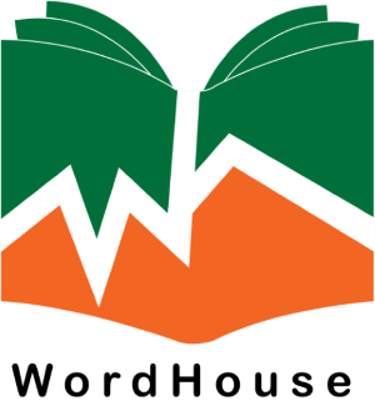Writing a First Draft, Creative Practices and Disciplines
WRITING AT WORDHOUSEWORKSHOP


When We Finally Sit Down to Start Writing
Starting the writing process can sometimes feel overwhelming, With our laptop and a bit of courage, we can readily begin writing. From the outset, understanding our audience and purpose is paramount. Identifying our readers allows us to tailor our content effectively. In fiction, this means recognizing genre preferences and age-group expectations; responsible writers consider their audience's desires. In non-fiction, a clear sense of audience and purpose dictates our structure, enabling us to align with readers' needs and interests.
We might ponder how a personal experience, a current event, or a specific interest will connect with our readers as we consider what to write. Our deep passion for a subject is what fuels our imagination. Writing about what we genuinely care about makes the process more enjoyable and leads to more engaging and authentic writing.
Once our topic is clear, it's crucial to gather references and delve into research. While we might believe our existing knowledge is sufficient, research invariably expands our understanding and enables us to choose the strongest information and insights, thereby strengthening our writing's authority. Consulting good books, well-cited articles, credible online sources, and even interviewing experts ensures the reliability of our information. High-quality data invariably results in a more comprehensive piece.
Incorporating journaling into our writing routine offers significant benefits. Through it, we document our thoughts, ideas, and observations, establish a consistent writing practice, and continuously reflect on the world. Beyond its therapeutic and enlightening aspects, the wealth of material from our journal entries serves as potent fuel for our imagination and creativity.
Creating a conducive writing environment for our first draft is a deliberate choice. We simply find a quiet and comfortable space to focus without distractions, personalizing it to our liking – some prefer clutter, others a minimalist aesthetic. Comfort in this space can spark creativity. Establishing a dedicated writing time and routine, setting writing goals, or writing until inspiration fades – discovering and sticking to what works is a key aspect of a writer's practice.
Writing, a reflexive process fueled by preparation, inspiration, and dedication, thrives when we understand our audience and purpose, focus on our passions, gather valid references, journal our experiences, and write in a conducive environment. By integrating these elements, we equip ourselves to complete our work and find satisfaction in our finished drafts.
Brainstorming Our Subject
Even when we have a general idea of our subject, we often face a multitude of possibilities for expressing it. Brainstorming helps us generate various ways to articulate and organize our thoughts, guiding us from a pool of ideas to the specific one we ultimately choose to explore. But how can we effectively brainstorm?
Freewriting: One technique is freewriting. While setting a timer (perhaps for 10-15 minutes) can add pressure, it can also be useful. The goal is to write continuously about our subject without concern for grammar or structure, allowing our thoughts to flow freely. This method can tap into our subconscious, uncovering hidden ideas and insights that might surprise us.
Mind Mapping: Another approach is mind mapping. Start by drawing a central concept within a thought bubble. From this central bubble, branch out to related subtopics. The resulting map visually reveals key points and connections within our subject. Mind mapping is particularly helpful for complex topics, as it can illustrate multiple layers of information and non-linear relationships, often broken down into visual cues that can feel like hyperlinks between thoughts.
Research: Research is also a powerful brainstorming tool. Begin by exploring library catalogs and selecting relevant articles, books, or videos to study. Paying close attention to the details of our sources is crucial. Exposure to diverse premises, perspectives, and arguments engages our minds in a dialogue, fostering a more well-rounded understanding of our subject.
Discussion: Engaging in discussions with knowledgeable individuals is invaluable during the drafting process. This can take place online, face-to-face, or by joining forums and chat communities. Exchanging ideas and hearing different viewpoints challenges our assumptions. This brainstorming of insights encourages us to commit to a specific stance only after carefully considering all available ideas. Furthermore, we can identify gaps in our own knowledge or understanding by hearing others' perspectives on the same subject.
Any of the brainstorming methods described above can yield a wealth of ideas and inspire our writing projects. Remember, our initial goal is to explore all accessible angles and perspectives before crafting engaging content. Generating a substantial number of ideas before organizing them logically will give our writing a more creative and dynamic momentum.
Gathering Our References
Once we have a clear writing direction, our references should not only support our ideas but also spark new reflections for future projects.
Use Reliable Sources: We need to rely on reputable sources like academic journals, established authors, and trusted websites to ensure our writing is backed by credible information. When selecting sources, consider author expertise, publication reputation, and evidence-based support.
Cite Our Sources: Always credit original authors when using their information. This prevents plagiarism and enhances our writing's credibility. Choose a consistent citation style (e.g., APA, MLA, Chicago) to attribute sources and allow verification of claims.
Take Detailed Notes: Note key points, quotes, and relevant information from our references. Recording these details, along with source information (author, date, title, page numbers), facilitates easy retrieval and saves time when creating our bibliography or works cited page.
Organize Our References: Use physical note cards, digital folders, or reference management software to store and easily retrieve our research throughout the writing process. Organized references help identify connections between sources and reveal content weaknesses or gaps.
From the first draft to the final output, our writing requires diligent gathering and management of references. Deliberate and careful research yields strong, well-supported arguments. Reliable, cited sources, detailed notes, and organized references contribute to more credible writing.
Journaling Our Experience
In the early stages of reflecting on experiences and pinpointing key moments or lessons, we typically engage in stream-of-consciousness writing. Thoughts pour onto the page without concern for grammar or structure, and our language remains unpolished, prioritizing the immediate capture of raw emotions and details in our everyday vocabulary. Vocabulary challenges are often deferred.
Yet, as journaling matures into a consistent practice, a desire to employ more descriptive and vivid language emerges, even in private entries. Sensory details, engaging the five senses, gain importance in documenting information, encouraging us to transcend clichés and forge novel expressions. This deliberate effort to create visual imagery strengthens our immediate connection to our unfolding story.
The act of journaling our experiences can be profoundly therapeutic, especially when seeking clarity amidst difficulty. Articulating our feelings and thoughts regarding a problem, an individual, or an occurrence often clears mental and emotional clutter, fostering a sense of inner peace
Writing Our First Draft: Key Steps
Schedule Our Writing: Let's establish a consistent writing time and routine that works for us. We can track our progress by setting daily (e.g., 100-word observation), weekly (e.g., edit a short draft), monthly (e.g., finish one chapter), and yearly (e.g., research publishers) goals, and we must commit to them.
Follow Our Outline: A basic outline of our main topics, sub-topics, and supporting details always helps. It's our roadmap to organize our thoughts after brainstorming, even if not every point makes it to the end.
Avoid Editing While Writing: We need to separate our writing and editing. First, let's put on our "writer's hat" and focus on getting our ideas down. Only after the draft is complete should we switch to our "editor's hat." Combining these hinders our creative flow.
Explore Our Ideas: The first draft will likely be messy, and that's okay. Let's capture all our ideas, even if we only use one for now. We can file the rest; tracking their evolution can be valuable as we often revisit and question our beliefs.
Focus on Our Big Picture: While writing, it's easy to get caught up in the details. But let's remember to stay focused on our message and purpose. We can fine-tune the specifics in the editing stage.
Eliminate Our Distractions: We each know what distracts us. It's wise for us to actively avoid these distractions to maintain focus.
Take Our Breaks: Writing a first draft can be draining. If we tend to push ourselves without rest, we risk overstretching. Bad health equals bad writing. So, let's pace ourselves with sleep, walks, or other rejuvenating activities.
Experiment with Style: Our authentic voice might not appear immediately. Let's not be afraid to consciously explore and apply different writing styles. Later, we can refine, innovate, or subvert these experiments. The first draft gives us room to imitate and explore.
Writing our first draft is challenging, but it's where writing begins. Our goal is to get our ideas out of our heads and onto the page. We can refine and polish later. So, let's focus, embrace the initial mess in our imitation, and enjoy writing!


